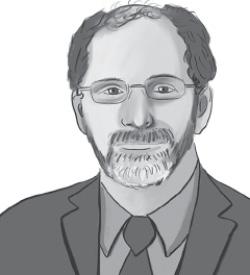Clean Energy Subsidies Enable More Ambitious Clean Air Rules

The climate change policy landscape is often characterized by multiple overlapping subsidies and regulations to drive emission reductions. Economists have long criticized such a belt-and-suspenders approach to policy as reducing cost-effectiveness and rewarding politically connected interests. However, a well-designed strategy of combined policies may complement each other to drive innovation and clean energy investment. This spring, EPA issued two regulations setting greenhouse gas emission standards for power plants and vehicles that illustrate the influence of Inflation Reduction Act subsidies on regulatory ambition.
In its final rule addressing power plant GHGs, the agency indicates how the IRA informed its determination that carbon capture and storage, or CCS, represents the “best system of emission reduction” under the Clean Air Act for existing coal-fired power plants and oil-and-gas steam-turbine plants. By subsidizing CCS technology, the IRA lowers the effective price tag for current adopters and, by spurring near-term adoption and potential learning-by-doing among early adopters, the law could enable costs to fall over time.
The requirements for installing CCS technology begin to bind in 2030 or 2032, depending on whether an operator intends to run a given plant beyond 2039. The timing of the regulatory compliance deadlines overlaps briefly with the IRA tax credits and serves to extend policy support for CCS technology well beyond the 2033 tax credit expiration under current law.
The effective sequencing of the tax credit and the regulation results in a reinforcing dynamic. The regulatory requirements in the 2030s enhance the incentive to take advantage of the tax credit for existing power plants in the 2020s. The prospect of broader tax credit-induced deployment of CCS in the 2020s increases the likelihood of compliance with, and the political durability of, the emissions standards. For innovators and entrepreneurs, the sequencing of subsidies and regulations signals long-term, predictable policy support for bringing CCS to market.
To be clear, combining an environmental regulation and a tax credit does not automatically increase energy production or reduce emissions. For example, the volumetric-ethanol excise tax credit and the renewable-fuel standard operated contemporaneously over 2006-11. The RFS mandated demand and the tax credit subsidized supply of ethanol. Most analysts at the time noted that the tax credit did not increase supply beyond the RFS-mandated quantities for corn ethanol. The tax credit primarily supported corn ethanol that had quite modest environmental and carbon dioxide benefits relative to petroleum-based motor vehicle fuel. Moreover, the tax credit did not favor innovation, such as using low-emissions cellulosic ethanol.
This spring, EPA also set new standards for light-duty-vehicle greenhouse gas emission standards for the 2027 through 2032 model years, which overlaps with the final five years of the electric vehicle tax credit under the IRA. While the 2023 U.S. electric vehicle market share was about 8 percent, EPA projects EVs to represent 30 to 56 percent of new light-duty-vehicle sales over 2030-32. Much of this increase reflects expected impacts of tax credits on EV market growth, but automakers complying with the regulation will likely supply more EVs to the market than they would under the subsidies alone.
At first blush, this may resemble the preceding case on ethanol policy, but there are some key differences. The subsidies for electric vehicles will likely promote innovation in the batteries that enable zero-emission vehicles. This stands in contrast to the ethanol tax credit, which did not spur clean energy innovation. Given the experience during the Trump administration, when EPA and the Department of Transportation weakened vehicle emissions and fuel-economy standards, leveraging greater adoption of electric vehicles through subsidies and regulations may enhance the political durability of a zero-emission transportation system.
Indeed, the best analogue may be a combination of policies announced in 2015: extensions of renewable power tax credits and EPA’s power-sector greenhouse gas regulation, the Clean Power Plan. This rule never took effect and its approach was struck down in the Supreme Court’s 2022 West Virginia v. EPA decision. The lengthy extension of renewable-power tax credits in the 2015 omnibus tax and spending bill, however, served as a form of insurance policy against legal challenges to the rule. With subsidized wind and solar generation, U.S. power-sector emissions fell faster than envisioned under the Clean Power Plan.
Careful policy design can be achieved through a belt-and-suspenders approach. Thoughtful sequencing of subsidies and regulations over time and using one type of policy as insurance for the other can accelerate the clean energy transition.
Clean Energy Subsidies Enable More Ambitious Clean Air Rules.
Nuclear Power Is Not Clean and Not Safe Enough

People who argue nuclear power is essential to combat climate change stress that wind and solar power are variable resources, dismissing the potential for energy storage, transmission, and grid management improvements that could bridge gaps between renewable energy supply and demand. Yet they are bullish on nuclear energy’s ability to quickly overcome the problems that caused it to lose support and stagnate in recent decades, including high cost, construction delays, inflexibility, safety risks, nuclear weapons proliferation, and the never-ending waste-disposal stalemate. This way of thinking is rooted more in technological bias than in logical analysis.
Our low-carbon energy future is not set in stone (or uranium). But the nuclear industry hopes to make itself look indispensable while struggling to stay relevant in the face of rapidly increasing deployment of renewable energy—as costs plummet (by about 70 and 80 percent for land-based wind and utility-scale solar power since 2010, respectively). In contrast, recent nuclear projects are losing against renewables because they have not realized the dramatic cost and schedule reductions promoters promised. The $35 billion twin-unit AP1000 plant at Plant Vogtle in Georgia has famously ended up costing more than twice as much and taking about twice as long to build as initially projected.
Westinghouse’s main rationale for the AP1000, an evolutionary variant of previous light-water reactors, was to slash capital cost by significantly reducing materials, components, and the volume of buildings that must meet the highest safety and seismic standards. It didn’t work. Vogtle’s cost per megawatt dwarfs that of another budget-busting nuclear project, the Olkiluoto EPR in Finland, even though the EPR’s design offers enhanced safety over cutting cost.
Undaunted, nuclear boosters brush off the Vogtle fiasco, claiming the future lies in cheaper “small modular reactors” or even tinier “micro-reactors” that can be deployed in locations not feasible for large plants. But a lower price tag doesn’t guarantee small reactors will be more economical: Diseconomies of scale dictate they will generate more expensive electricity unless capital and operating expenses can be slashed well below any reductions obtained by simply scaling down.
And while reactor design standardization may reduce cost and speed up deployment, the Department of Energy is pursuing the opposite approach, spreading development dollars among a vast menagerie of exotic reactor concepts. Many would use specialized fuels, materials, and components that need unique supply chains and manufacturing facilities. While no one wants the government to be in the business of picking winners and losers, this scattershot policy risks adding up to a whole lot of nothing.
To cut costs and speed up deployment of these first-of-a-kind reactors, developers are irresponsibly seeking many exemptions from fundamental safety requirements, such as robust, leak-tight containments; materials and construction of the highest quality; and full complements of trained operators and security personnel. And to facilitate reactor siting near densely populated areas or hazardous industrial facilities, the industry wants to forego the emergency planning critical to protect communities from a major accident or terrorist attack. Even so, after cutting numerous safety corners, NuScale, the most mature U.S. small modular reactor project, experienced a 50 percent increase in its projected power cost and was dumped by its only viable customer in November 2023.
Developers justify their push for weakened regulations by claiming their reactors are safer than current-generation plants. But a 2021 Union of Concerned Scientists review found these experimental reactors pose novel and poorly understood risks—which will be aggravated if there is a rush to license technically immature designs under less stringent rules that do not require the same safety margins and redundant layers of protection as operating reactors have.
Although the Nuclear Regulatory Commission is significantly easing its licensing rules, pro-nuclear organizations unfairly scapegoat it for the largely self-inflicted problems that are causing nuclear to lose the race with renewables, urging the agency to even more drastically gut the regulations that have helped U.S. reactors remain meltdown-free since the 1979 Three Mile Island accident. These groups claim nuclear power is “clean” and that its safety risks have been exaggerated, downplaying the disasters that the world witnessed with horror at Chernobyl and Fukushima. While they say they act in the public interest, their anti-regulatory stance and denial of the dangers of ionizing radiation are totally in synch with the nuclear industry’s bottom line. Rigorous studies show that low exposures to radioactive materials can cause cancer and even cardiovascular disease. It is simply false advertising to label as “clean” a power source that generates copious quantities of long-lived poisons with the potential to severely damage the environment.
Nuclear safety should not be traded away to give the industry a leg up in its competition with rapidly advancing renewables. Nuclear power will succeed only if it can achieve a safety level high enough to effectively preclude another Fukushima-scale accident—or worse—that could send public support of the technology to the basement for another generation.
Edwin Lyman is the director of nuclear power safety at the Union of Concerned Scientists.
Creating a New Pathway for Nuclear Energy

The recent commitment at COP28 by nearly two dozen countries—including the United States, United Kingdom, South Korea, and France—to triple their nuclear energy capacity by 2050 underscores a simple truth: expanding nuclear energy is essential for meeting decarbonization targets amidst growing global energy demand. Overreliance on a single set of technologies is not the best recipe for success. Instead, a robust portfolio of solutions is needed to meet the size and complexity of the challenge. But at the same time, cost matters. Capital must be allocated wisely in a world of scarce resources. In that light, costs must be reduced and delivery times accelerated if nuclear energy is to play a significant role in the energy transition.
Global decarbonization scenarios predict a substantial increase in electric power output by mid-century, a doubling or even tripling of current capacity. This surge will be driven by electrification of various sectors and heightened demand, particularly in developing regions. While renewables such as wind and solar will serve as cornerstones of a decarbonized electricity grid, studies consistently highlight the need for substantial amounts of non-weather-dependent, always-available zero-carbon power to maintain reliability and contain costs.
Nuclear energy is already the world’s largest source of this kind of “clean firm” power available today. And it can address several critical aspects of the energy transition. It can reduce the need to build excess wind and solar capacity many times over peak demand, as well as expensive, rarely-called-upon energy storage. Due to its energy density and siting flexibility, it can reduce critical minerals and materials requirements and ease land-use and grid infrastructure barriers. It can also reduce exposure to climate-related risks, while lessening widespread curtailments of energy demand. Finally, by avoiding the challenges of siting excessive solar and wind projects, it can accelerate the energy transition.
Despite these apparent advantages, nuclear energy development has stagnated globally. While determined minority public opposition continues to be a challenge for nuclear expansion in some locales, and for individual projects, increasingly, concerns around cost and competitiveness weigh more heavily. These concerns are not unfounded. Recent large light-water reactor projects such as Olkiluoto in Finland and Vogtle in the U.S. state of Georgia, both of which were completed nearly a decade or more late and at least two times over budget, have understandably led critics to question whether the technology has a future. Indeed, the poor cost performance and high project delivery risk is one of the reasons current nuclear investment globally is so low compared to other low-carbon energy sources. And it is obvious that current global investment in new nuclear capacity is far lower than will be required to support a global rate of scale-up sufficient to meet future clean energy demands, let alone a tripling of capacity by 2050.
Flaws in the current delivery, business, and regulatory models for nuclear energy technology bear much of the blame. Remedying these flaws becomes urgent in the context of climate and economic development goals that demand rapid, simultaneous expansion of all low-carbon energy options, including nuclear, across multiple regions of the world. This seems like a daunting task, but it has been done before. From 1980 to 2000, global nuclear generating capacity—nearly all in the form of large conventional light-water reactors—grew rapidly, with as much as 30 gigawatts being added each year in the early 1980s, a rate of growth similar in magnitude to what might be needed today. However, recognizing that the nuclear industry of today, with its high cost and slow delivery time, is not sufficient to meet modern challenges, CATF has proposed six mutually reinforcing solutions to the current nuclear industry dysfunction.
The first is productization, a shift from slow, expensive mega-projects to standardized, manufactured products to achieve economies of scale and reduce costs. Second is prioritization of large order-books, aggregating demand for repeat builds of the same design to consolidate project risk and maximize learning-by-doing. Third is plant delivery integration. Independent Nuclear Development Organizations should be formed to streamline project development and deployment. Fourth is harmonized global licensing, which involves the creation of a Global Licensing Authority to provide globally accepted Design Acceptance Certificates. Fifth is technical support for new nuclear nations, requiring the creation of an International Technical Support Organization to assist first-time nuclear countries in overcoming licensing barriers. Finally, sixth is broader access to financing, achieved by establishing an International Bank for Nuclear Infrastructure to provide financing and support for nuclear programs.
These proposed solutions represent a new pathway for nuclear energy to meet the climate and human development challenges of the coming decades. Implementing them will significantly disrupt existing industry practices, amounting to a fundamental reset in how nuclear energy is licensed and delivered, but the effort will be worthwhile if nuclear can live up to its full potential as a clean firm power source. If that is the case, then the energy transition will be much faster and far less costly.
Jon-Michael Murray is CATF’s nuclear policy manager and is responsible for developing and advocating for policies that promote the development and deployment of advanced nuclear energy technologies in the United States and globally.
The Climate Needs Nuclear Energy

The world faces disaster from climate change, but building out our nuclear power capacity will help temper the the challenge. We will need more nuclear because new renewable generation alone is unlikely to supplant fossil fuels, and nascent carbon capture technologies may not mitigate environmental impacts from oil, gas, and coal.
According to the International Energy Agency, 87 percent of the total global energy supply in 1973 came from fossil fuels. In 2019, it was still 81 percent. The IEA projects that total energy demand could start declining through 2030 if all countries were to meet their climate targets on time or reach net-zero emissions by 2050. But look no further than COP28 to observe how off track the world is from these achievements.
In this landscape, nuclear alongside renewables offers key benefits. Reactors reliably produce about 10 percent of global electricity today. They release no operating emissions, and their median lifecycle emissions are on par with offshore wind.
Policymakers, including Democrats and progressives, recognize these assets and the ongoing improvements to the safety and efficiency of new nuclear designs. In a 2010 speech, President Obama acknowledged nuclear’s controversial stature while urging a fresh look at its role in meeting new energy demand and fighting climate change. President Biden is similarly supportive. When I was reporting on energy in 2019, Representative Alexandria Ocasio-Cortez (D-NY) told me the Green New Deal resolution she sponsored “leaves the door open on nuclear.” She supported the closure of the Indian Point nuclear plant north of New York City, but added that “one plant built decades ago is not emblematic of the technology that we have today.”
It’s true that renewables are less expensive to build than reactors. But the Department of Energy estimates in a recent “liftoff” report that advanced nuclear with tax credits will be cost-competitive with renewables plus long-duration storage, or with natural gas plus carbon capture, which would each provide similar low-carbon or reliability benefits.
Likewise, the least-cost transition to cleaner grids will not always maximize value for surrounding communities and workforces. Much of nuclear’s expense represents investments in local economies and labor. Today’s nuclear plants support 500-800 permanent workers across many professions and create thousands of jobs during construction. The plants also support communities with state and municipal tax payments and emergency preparedness funds. Job quality also matters: At 19 percent, nuclear’s workforce is the most unionized in the electric power generation sector, compared with 17 percent for coal, 12 percent for wind, and 11 percent for solar, according to the most recent U.S. Energy and Employment Report.
While nuclear energy has helped avoid 70 gigatonnes of global carbon emissions to date, nations like the United States still have important work to do to improve nuclear’s viability as a social and environmental tool. In some countries and communities, its wartime origins and three high-profile accidents contribute toward a prevailing sense of dread of nuclear energy. Past uranium extraction scarred landscapes. In the 20th century, U.S. officials knowingly failed to protect the indigenous Diné, who mined uranium for the government, from contamination and has yet to redress that harm. It is incumbent on both governments and developers to address public concerns about nuclear, involve potential host communities in new projects, and prioritize ethicality in sourcing nuclear fuels and materials.
And people rightly ask: What about nuclear waste? By the time of Obama’s 2010 remarks, he had directed DOE to convene experts who could recommend a comprehensive approach to managing domestic spent nuclear fuel. This was important. Although the United States has never experienced a release of nuclear waste from commercial plants, the 70-plus communities that host nuclear waste in over 30 states never agreed to hold it long-term. The experts’ first recommendation was for Congress to direct a process to site waste storage facilities based on local consent. Congress obliged. My organization, with our project partners at the University of Notre Dame, are among DOE’s awardees to propose a community-involved approach to storing nuclear waste.
One thing that new advanced reactors may not be able to do is meaningfully reduce global emissions by 2030. But the climate will not stop heating after that date. New nuclear could make a critical dent in emissions by mid-century. According to the IEA, 35 percent of the emissions reductions the world would need to achieve to reach carbon neutrality in 2050 will come from technologies like small modular reactors that aren’t yet on the market.
Pollsters at Gallup and Pew Research Center have charted recent increases in U.S. adults’ favorability toward nuclear. Hopefully for the planet, those results reflect a durable recognition that, if approached ethically, nuclear can address climate change while providing local value.
Jackie Toth is deputy director of Good Energy Collective. She is a former energy and environment policy journalist.
A Clean and Sustainable Future

Now more than ever, the world needs pragmatic solutions that can support an equitable clean energy transition. To combat the climate crisis, we must move away from carbon-emitting energy sources as quickly and responsibly as possible. We cannot afford to leave communities behind, sacrifice system reliability, or undermine affordable access to energy. The Biden administration has made it clear that, to do this, we need nuclear energy. Analysis by the world’s key experts supports this conclusion, including assessments by the Department of Energy, the Intergovernmental Panel on Climate Change, the International Energy Agency, and the International Atomic Energy Agency.
At the recent COP28 climate summit, 22 nations, including the United States, pledged to triple nuclear energy capacity by 2050 to meet net-zero emissions goals. For the United States, that means installing approximately 200 gigawatts of new nuclear power by mid century.
Recognizing the scale of this challenge, the DOE’s Office of Nuclear Energy supports research and development to reduce reactor costs, decarbonize markets beyond electricity, and above all, build new reactors.
New, advanced nuclear reactors are poised to provide much needed clean energy relief to communities around the world. Small modular reactors and microreactors present cost-effective options for diverse energy consumers, promising reduced construction costs and timelines. The energy density of nuclear power enables compact plant sizes suitable for powering self-sufficient microgrids in remote areas, reliably supporting critical infrastructure, and replacing retiring coal plants across the nation. These advantages provide important choices for communities looking to meet increasing energy demand without sacrificing jobs, reliability, or the environment.
Many reactor technologies commercializing today are designed to adjust their electricity output to complement renewable technologies, ensuring a stable and reliable supply of energy. This is a role currently filled by natural gas peaking plants, which if replaced with nuclear energy would significantly reduce carbon emissions.
Some advanced reactor designs can generate high temperatures well-suited to decarbonize energy-intensive processes that currently rely on fossil fuels, including hydrogen production, desalination, district heating, petroleum refining, and fertilizer production. These industrial applications make up nearly a quarter of greenhouse gas emissions and cannot be fully decarbonized without the clean, thermal energy available from reactors. That’s why DOE is supporting initiatives such as the Hydrogen Energy Earthshot, which includes billions of dollars to establish Hydrogen Hubs across the country; the Industrial Decarbonization Energy Earthshot focused on applications with the hardest-to-abate emissions; and the X-energy high-temperature gas reactor demonstration in partnership with Dow.
Advanced reactors are also being designed with enhanced safety and security features such as lower power levels, reduction or elimination of safety-related human intervention, and below-ground construction. Assuring the safety of new reactor designs is vital for public trust in nuclear as a clean and reliable power source, but it’s important to recognize that nuclear energy is already safe—safer in fact than almost any other energy source.
To deliver on the promise of advanced nuclear reactor technology, we must also secure the supply of nuclear fuel and find ways to ensure sustainability in the back end of the fuel cycle. With regard to securing the supply, the United States and many of our allies have declared a commitment to expand fuel supply chain capacities to displace Russian conversion-and-enrichment supply. Domestically, this will require strategic investments coupled with import restrictions that protect those investments well into the future.
On the back end, waste management is a critical aspect of the industry’s sustainability. The development of advanced reactors offers a promising solution, with designs capable of using spent fuel, thereby reducing the material requiring disposal in repositories. DOE is investing in research to improve waste recycling and disposal technologies, aiming to make nuclear energy more sustainable. Through millions of dollars in community engagement activities, DOE has kickstarted a consent-based process to site one or more federal consolidated interim storage facilities for commercial spent nuclear fuel as a near-term action.
The social, environmental, and economic costs of the climate crisis far outweigh the costs of deploying new nuclear reactors. Nuclear energy has already saved millions of lives by avoiding air pollution-related deaths. As we face the impacts of a changing climate, including the increased frequency and strength of extreme weather and climate events, nuclear energy must be part of the solution.
A failure to implement advanced nuclear energy solutions will cost more than humanity can afford. We don’t have the luxury of time. Communities around the world deserve access to clean energy, water, and air today. Nuclear energy can, and must, deliver a cleaner, more prosperous future for all.
Kathryn Huff leads the Department of Energy’s Office of Nuclear Energy as the assistant secretary.
The Debate: Is More Nuclear Energy Essential to Combat Climate Change?

With demands to eliminate climate change-inducing carbon emissions gaining urgency, nuclear energy is enjoying renewed if controversial support worldwide and domestically. In the United States, lawmakers and policymakers are aware that the technology has important downsides, such as resolving tricky waste disposal issues and ensuring reactor safety, with several historical disasters in the public mind. Those issues as well as cost per kilowatt-hour have led to level growth in the United States in recent decades. But now some are arguing that an energy source with virtually no air emissions deserves a new look, particularly with advanced designs on the drawing board that aim to address these and other problems.
The first new reactor in the United States in seven years started commercial operation last July in Waynesboro, Georgia, making 94 currently in operation nationwide. At present, nuclear generators provide about 20 percent of U.S. electricity consumption. To halve the utility sector’s carbon emissions by 2030 and achieve net-zero emissions by 2050—while electrifying the transportation, manufacturing, and building sectors—President Biden’s administration is promoting advanced nuclear designs and says failing to accelerate investments in reactor technology risks missing decarbonization targets.
But to successfully address climate change, and given projected growth of renewables, do we need new nuclear facilities to fill in gaps, particularly in providing baseload electricity? To meet Biden’s schedule, can we reduce the time needed to approve, site, and build reactors? Can the industry design generators at lower risk from meltdowns, terrorist attacks, and other calamities? What about the concern that nuclear fuels and byproducts can lead to proliferation of atomic weapons? And can we solve the long-term waste-disposal problem?
With demands to eliminate climate change-inducing carbon emissions gaining urgency, nuclear energy is enjoying renewed if controversial support worldwide and domestically. In the United States, lawmakers and policymakers are aware that the technology has important downsides, including waste disposal and reactor safety. But now some are arguing that an energy source with virtually no air emissions deserves a new look, particularly with advanced designs on the drawing board that aim to address these and other problems.
Greentech Conference Highlights Long Road for Energy Transition

“Put[ting] the full financial might of the federal government behind a clean energy transition for the first time in our history,” the Infrastructure Investment and Jobs Act together with the Inflation Reduction Act have the potential to be “truly transformative,” declared Professor Jesse Jenkins, Princeton professor and co-founder of ZERO lab. Jenkins delivered a keynote address at the 2023 Greentech Conference on “Implementing the IRA and Accelerating the Energy Transition: Legal and Policy Challenges on the Road to Net Zero,” jointly hosted by ELI, Georgetown Climate Center, and Georgetown Environmental Law & Policy Program.
But Jenkins’s statement came with a cautionary note. U.S. climate goals cannot be achieved through wind and solar alone—an array of energy technologies will have a critical role to play, including nuclear, hydrogen, biomass, and natural gas with carbon capture.
Moreover, he warned, a rapid shift toward electrification and renewable energy sources cannot occur without a massive infrastructure buildout—a veritable “moonshot.” Central to this project will be the national expansion of transmission networks and updating of grids. Participants on a panel on associated permitting reform remarked that siting this wave of new energy infrastructure will require new approaches.
Focusing on the power sector, transportation, and carbon management and accounting—and featuring in-depth discussions on equity and environmental justice—around 150 in-person attendees and 400 virtual participants engaged with over 40 speakers and panelists, representing the private sector, federal and state governments, academic institutions, NGOs, and community-based organizations. As co-chair of the conference, I was particularly inspired to see environmental and energy lawyers from diverse backgrounds passionately engage on new legal frameworks.
Conference participants did not agree on everything. They offered differing perspectives on the societal implications of various technologies. But one thing they did agree on was that government cannot do this alone. There is a need for deep private-sector and civil society collaboration, contribution, and participation in decisionmaking. Indeed, as Ethan Zindler, climate counselor for the Treasury, noted, the IRA is the “single biggest public-private partnership in the history of mankind.” Zindler added that one of the biggest challenges is ensuring that both companies and the public understand and have the wherewithal to take advantage of the opportunities presented by the law.
Conference “rapporteurs,” representing a variety of institutions, extracted common themes and key priority areas for immediate action. Here are some of their conclusions:
“Going forward it will be important to build the capacity of all actors, from communities to industry to government officials, to effectively implement the energy transition.” They stated that “industry will need to learn how to engage with communities, navigate permitting and other processes, and make their facilities more appealing for local partners.” The rapporteurs warned that “communities will need capacity to understand new technologies and participate fully in technical and complex projects and processes.”
The group counseled developing partnerships. “Growing connections, relationships, and trust across stakeholders will be key to the equity and effectiveness of the energy transition.”
It should come as no surprise to professionals that “it will be important to demonstrate the workability of these innovations and share best practices and success stories widely. This includes finding ways to communicate effectively and clearly about new technologies.”
Finally, the rapporteurs advised “measuring progress with equitable indicators of success. . . . The indicators that we use to measure success matter. These indicators must be created to reflect values of equity.”
Arnold & Porter’s Stacey Sublett Halliday, who co-chaired the conference’s environmental justice plenary session, reflected on the momentum being generated for such collaborative efforts: “IRA funding opportunities, and associated requirements under the Justice 40 Initiative to direct benefits to disadvantaged communities, only reinforce the need for broad stakeholder collaboration and engagement if we are to address a host of technical and legal challenges.”
At COP28, the parties reached an important agreement calling for “transitioning away from fossil fuels in energy systems, in a just, orderly, and equitable manner.” It further calls upon nations to “accelerat[e]” a wide array of “zero- and low-emission technologies, including, renewables, nuclear, abatement, and removal technologies such as carbon capture and utilization and storage, particularly in hard-to-abate sectors.” As Greentech participants recognized, this is an all-hands-on-deck moment.
Greentech Conference Highlights Long Road for Energy Transition.
Speedy Processes Needed to Meet 2035 Carbon Goal

The U.S. power grid needs to be upgraded and expanded to meet the country’s goal of 100 percent clean electricity by 2035. Currently, the aging transmission system and the associated planning and permitting processes cannot support the transition to clean energy. Power lines are 40 years old on average. More than a quarter of projects were built over 50 years ago and 70 percent of lines are more than 25 years old.
One study estimates that high-voltage transmission capacity will need to expand by about 60 percent by 2030 and triple by 2050 to meet electrification needs and demand growth. The total cost is estimated to be $330 billion through 2030 and $2.2 trillion through 2050. The permitting and planning process for transmission infrastructure is decentralized and complex, which leads to excessively long lead times that slow the pace of transmission deployment—many took longer from initiation to construction than the time remaining until 2035, when the grid needs to be carbon-free.
Energy permitting and planning reform is well underway through measures passed across the government but has so far failed to address transmission infrastructure directly. In May, Congress passed the debt ceiling bill, which included permitting provisions to shorten the time-line to conduct National Environmental Policy Act reviews to two years, one year, and six months for different energy projects. In July, the Federal Energy Regulatory Commission passed a new rule to accelerate the interconnection process for the over 2,000 gigawatts of renewable energy waiting in the queue. FERC is also drafting a new rule on transmission planning that will address cost allocation and long-term planning within regions. The Department of Energy published a draft National Transmission Needs Study and will publish a National Transmission Planning Study later this year or early next year. The progress so far is significant and commendable, but more must be done to address transmission infrastructure specifically.
Perhaps the most immediate solution is for FERC and the DOE to use an existing, never fully implemented authority under Section 216 of the Federal Power Act. Under the act, DOE has the authority to designate National Interest Electric Transmission Corridors where the agency has identified present or expected constraints or congestion on transmission capacity. Once a NIETC is established, FERC can use its existing authority to approve a competitively sourced transmission project or projects within the NIETC, providing significant benefits to the communities in the states where the project is built.
DOE and FERC first used the NIETC designation in 2007, but two courts vacated the rules and NIETCs mainly on environmental, and not statutory, grounds. DOE has since released a Notice of Intent in May that would establish an applicant-driven, route-specific process. FERC released a proposed rulemaking for siting lines within NIETCs in December of last year. Now, DOE and FERC should work to operationalize the NIETC framework to deliver high-value interregional transmission lines at the pace necessary to meet clean electricity goals in 12 years.
Establishing NIETCs would have a major impact on the buildout of transmission infrastructure by facilitating the construction of interregional transmission lines. The DOE national transmission needs study affirmed that interregional transmission lines are the highest-value projects, which would bridge the three U.S. interconnections and provide additional reliability to the grid during increasingly frequent extreme weather events. DOE estimates suggest that interregional transfer capacity will need to expand sevenfold on average by 2035 and more by 2040. Transmission investments can lower electricity bills by expanding the system to lower-cost generators and reducing the likelihood of outages. One simulation showed that additional transmission could save $3 billion per year in 2035 and $4 billion per year in 2040.
With only twelve years remaining for the United States to meet its stated clean energy goal and transmission projects taking at least five to ten years or more to site, permit, and construct, immediate solutions like the NIETC process are needed.
While legislation would be another effective tool to accelerate infrastructure development, permitting discussions in Congress have stalled. Nevertheless, legislation that mandates minimum interregional transfer capacity, gives FERC exclusive jurisdiction over interstate transmission, and provides direction on cost allocation and eminent domain procedures would significantly accelerate transmission deployment, including within the NIETC process. Passing this type of legislation may not be possible now but will be reassessed based on the results of the 2024 election.
Ken Berlin is a senior fellow and director of the Financing and Achieving Cost Competitive Climate Solutions project at the Atlantic Council Global Energy Center. He is the former CEO of the Climate Reality project. He was aided in writing this article by Frank Willey, a project assistant at the center.
No Transition Without Transmission

Transmission expansion may be the most important opportunity for decarbonization in the United States and most other countries. Renewable energy replacing fossil power generation is among the least-cost, fastest, and most scalable opportunities. But large-scale renewable deployment can only happen with significant transmission expansion. As it stands, most needed renewable energy generators are stuck in five-year-long interconnection queues, and those that are on line and operating are subject to frequent curtailment when grid capacity prevents them from delivering to electricity customers.
You don’t need to support speedy action on climate to support large-scale expansion of the transmission system. Reliability and resilience also require a major grid upgrade. In many recent instances of polar vortices and heat domes, it has been the movement of large volumes of power, often over 10 gigawatts, from one region to the next that has kept the lights on. Power scarcity happens in individual regions but there is typically plenty of available power in neighboring regions that can be delivered, if and only if we have sufficient inter-regional transmission capacity. Power from the Mid-Atlantic helped keep the lights on in the Dakotas during Winter Storm Uri in 2021, to give one example, and that was simply not possible in Texas because the state’s import capacity was too limited, causing tragic deaths and economic harm.
So how do we expand the grid? We need to address the barriers, which are the “3Ps”: planning, permitting, and paying.
Planning: The first step is to plan for the future resource mix and determine an efficient, reliable, and environmentally responsible set of lines and upgrades. Unfortunately, in a recent report card of regional planning around the country by Grid Strategies for Americans for a Clean Energy Grid, most regions received a C grade or worse.
Congress and the Federal Energy Regulatory Commission can rectify this poor performance. FERC’s transmission planning and cost allocation rule has the potential to be the most important energy policy in the country for this reason. Independent transmission developers and utilities need not wait; they can identify valuable routes and find viable rights-of-way right now, and then bring proposals into planning, and permitting, and cost allocation processes.
Planning is also the way to balance land and wildlife considerations. As Marshall Johnson, chief conservation officer of the Audubon Society, said in its 2023 report “Birds and Transmission: Building the Grid Birds Need”: “Not only does Audubon understand the urgency of making the critical investments that will prepare the transmission grid to handle a clean energy future, we also understand how important it is to do it in the right way. How and where new transmission is constructed will have a tremendous impact on birds and our communities.” That requires planning with key stakeholders involved, including wildlife protection organizations.
Permitting: Recently 10 major lines moved from the ready-to-go category into construction. This is important progress. But many of these lines were over a decade in the making. We simply do not have time for lines to take over ten years. The Department of Energy’s lead agency function, along with its public-private partnership, Transmission Facilitation Program, and National Interest Electric Transmission Corridor authority can help move project approvals faster while preserving environmental standards. Greater authority for FERC will help as well.
Paying: While there is no shortage of capital to invest in transmission, the structure of the electric industry was not designed for planning or recovering costs from large interstate-highway-type lines. Transmission is a classic public good, in which the beneficiaries are so many and so dispersed that it is in no individual’s economic self-interest to help fund it. We have two ways in a modern democracy to pay for public goods: taxpayer funding (e.g., grants and tax credits), or regulatory cost allocation, where costs are assigned to appropriate electricity ratepayers. Either one could do the job.
A transmission tax credit and FERC cost allocation are both being considered by Congress, and FERC’s regional transmission planning proposed rule includes cost allocation. FERC can and should do the same for interregional transmission. Cost allocation by FERC follows a “beneficiary pays” principle under various court decisions interpreting the Federal Power Act to ensure a fair allocation among users of the system. Whether the builder of transmission is a utility, independent developer, or combinations of different types of companies, taxpayer or ratepayer funding will be required.
There is no better time than now. The best time to start working through the planning, permitting, and paying challenges would have been ten years ago. But it didn’t happen, and almost no long-haul large capacity transmission was built over the last decade. The next best time is right now.
Rob Gramlich is the founder and president of Grid Strategies LLC, a Washington, DC-based consulting firm focused on electricity transmission and power markets to support low-cost decarbonization.